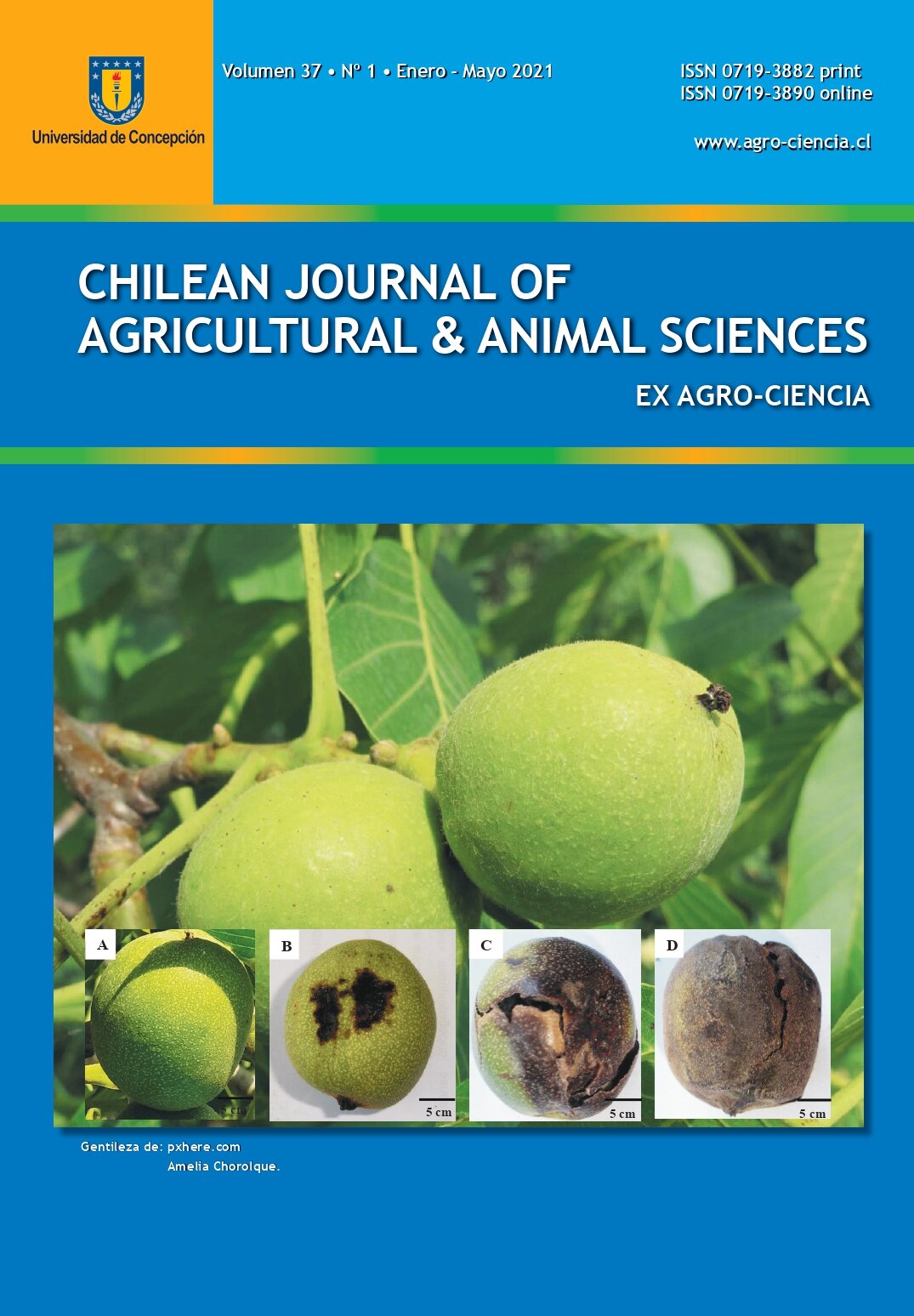SHOOT AND ROOT BIOMASS IN CORN HYBRIDS WITH DELAYED SENESCENCE WITH TWO SPATIAL ARRANGEMENTS AND IRRIGATION
Silvina Inés Golik1*, Hugo Martin Pardi2, Horacio Abel Acciaresi1,3
ABSTRACT
It has been determined that in maize (Zea mays) hybrids with delayed senescence (SG: stay green) have advantages over hybrids with senescence in early stages of grain formation. The objective of this study was to evaluate the performance of hybrids SG and with normal senescence, under two conditions of spatial arrangement, with and without irrigation during the grain filling period. In R2 (blister) and R6 (physiological maturity), shoot and root biomass were determined by collecting samples and then drying to constant weight. Grain yield was determined in R6. For the first season it was found that the SG hybrid produced more biomass (2880 g m-2 in R6), greater root biomass in both spatial arrangements, both with and without irrigation (AX 892: 1384 g m-2) compared to senescent hybrid. For the second season the SG hybrid had grater biomass, root biomass and yield (AX 882: AX 1247 g m-2) versus the senescent hybrid. It was concluded that SG hybrids favor extensive production systems with a rational use of soil water, contributing to agroecosystem sustainability. The rectangular arrangement had more productivity, and water availability throughout the crop cycle increased the yield potential of SG hybrids.
Key words : Zea mays, stay green, irrigation, yield.
1 Cerealicultura, Departamento de Tecnología Agropecuaria y Forestal, Facultad de Ciencias Agrarias y Forestales, Universidad Nacional de La Plata (UNLP), Casilla de Correo (CC) 31, 1900 La Plata, Argen- tina.
2 Climatología y Fenología Agrícola, Facultad de Ciencias Agrarias y Forestales UNLP, CC 31, 1900 La Plata, Argentina.
3 Comisión de Investigaciones Científicas, Provincia de Buenos Aires, Argentina.
* Autor para correspondencia E-mail: [email protected]


